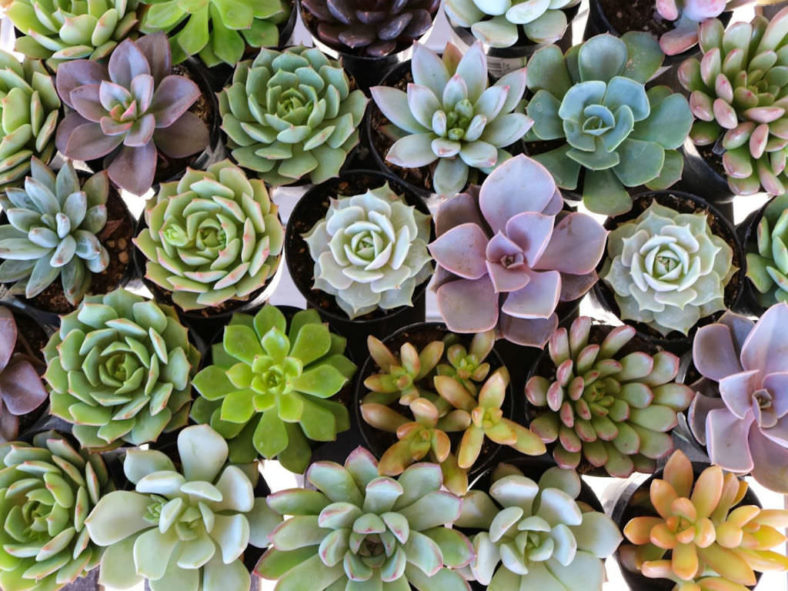Succulents are all the rage, and with good reason. They are beautiful, interesting, and easy to care for. They are often used as decorative elements both indoors and outdoors. However, succulents are living plants that require some care to survive and thrive. While caring for them is not complex, knowing the basics will help you have the healthiest plants possible.
Succulent is a general name for any plant with a swollen part that can hold excess water in the leaves, stem, or roots. People commonly refer to succulents as plants with fleshy leaves, typically identified as Sedum, Sempervivum, Echeveria, Aeonium, and Crassula. Understanding that the word "succulent" does not refer to a type of plant but describes its characteristics will help you know how to care for them.
Choosing Succulents
As most plants commonly referred to as succulents belong to different families, their care instructions will differ. The best way to learn what a plant needs to thrive is to read the tag that comes with it. Unfortunately, succulents sold at shops that do not specialize in plants will often not have proper labeling, so you may not even know the name or care instructions for that plant. In general, though, look for the following:
- Healthy-looking leaves with no odd discoloration, spots, or tears;
- Plants that look "full" with leaves that start at the base of the plant and are closely spaced, particularly Sempervivum and Echeveria, which have a rosette-shaped pattern to the leaves.
- No pests on the leaves…
- …or soil. Gently pull the plant out of the pot and inspect the soil. Look for signs of pests, disease, or tightly wound roots, indicating the plant is root-bound.

Watering
Just because these plants are drought-tolerant does not mean that they do not need water. It simply means that they will tolerate longer periods of drought. With regular watering and proper conditions, succulents can be low-maintenance and last for years.
Water the succulents until the soil is damp. Then, allow the soil to dry out before watering again. There is a big difference between soil drying out and drying up. Allowing the soil to feel dry to the touch is good practice, but if it has shrunk from the sides and becomes hard, you have waited too long. Rehydrate dried soil by soaking the pot in a sink or tray filled with an inch of water for a few hours, until the soil has rehydrated.
Sunlight
Place succulents in direct sunlight for optimal results. But, again, keep in mind that not all succulents come from the same family, and some may require more or less sun than others. Plants that receive insufficient sunlight will become leggy. Plants that receive too much sun will develop scorched leaves.
Overwintering
If you're lucky enough to live somewhere where winters are mild and succulents thrive all year, then you're in luck! You will likely have plenty of huge succulents around to enjoy. However, there is an important distinction for the rest of us to be aware of when it comes to succulents in colder climates. Hardy succulents need a cold period to thrive at some point in the year, and tender succulents will die if left in the cold.
Hardy succulents, such as Sedum and Sempervivum, are excellent additions to cold-climate gardens, particularly in containers. In the fall, move the containers undercover (but not indoors) and leave them alone for the winter. Then, next spring, pull the pots out and set them in the sun. They will be back to their former glory in no time!
Tender succulents are best brought indoors for the winter. Try to find the sunniest location you can, water a bit more sparingly, and remove any dead leaves as they dry up.
Tidying Up Succulents
Whether they braved it outside or inside, these lovely plants can appear to have taken a beating over the winter. Hardy succulents will need the brown outer leaves removed and the soil refreshed. Tender succulents may need replanting, as they likely became leggy while searching for light indoors.
Source: gardentherapy.ca
Links
- Succupedia: Browse succulents by Scientific Name, Common Name, Genus, Family, USDA Hardiness Zone, Origin, or cacti by Genus